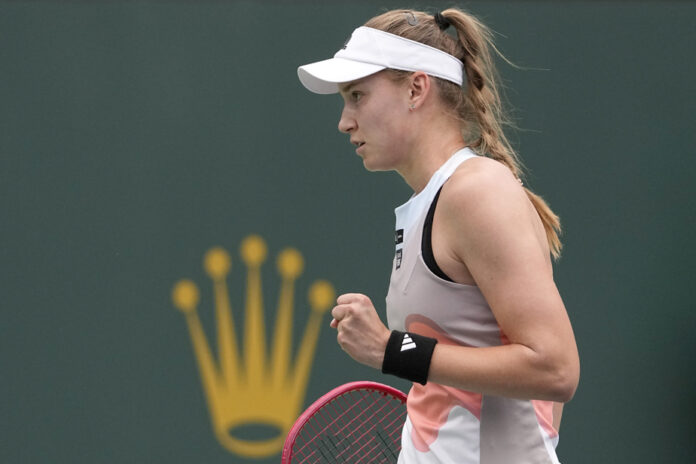There is a fascinating dichotomy in women’s tennis. The quality of the game has never been so high. On the other hand, no player transcends her sport. Strangely, this finding is both worrying and reassuring.
“Tennis fans are winners,” argues Valérie Tétreault, director of the National Bank Open (OBN) and former WTA player.
“There was a time in Grand Slam tournaments, before the second week, the matches weren’t good. We could really make pretty accurate predictions until the quarter-finals. While there, there may be surprises from the first round. There is no easy game,” she continues.
Same story from Sylvain Bruneau, Head of Women’s Tennis at Tennis Canada: “Now the 50th player in the world is closer to the first than before. It makes the tournaments interesting, there are more surprises and more things to happen. The level has really tightened. »
Women’s tennis is on the right track. The Australian Open finals ratings are proof of that. For once, more people watched the women’s final. An average of 1.43 million Australians watched the match between Aryna Sabalenka and Elena Rybakina. A duel that instantly became a classic, so high was the quality of the game and the show.
In men, the match between Novak Djokovic and Stéfanos Tsitsipás attracted 1.3 million curious people.
This data may be suggestive of a changing of the guard or a new trend in women’s tennis advantage, but as Tétreault puts it: “Tennis would benefit from having a few players who stand out and stand out. By their performances, but also by their personality. What they will generate and how they will succeed in selling their sport. »
Gone are the days when players like Monica Seles, Steffi Graf, Maria Sharapova or Serena Williams were an integral part of popular culture. Today, if Infoman or Guy Nantel asked passersby, microphone under their noses, to name two or three players from the current top 10, the failure rate would be alarming.
For example, on Instagram, top 10 players are followed by an average of 1.96 million subscribers. Among women, they are on average 502,000. Also, only one player has crossed the milestone of one million subscriptions. This is world number one Iga Świątek. Among the men, four reached this plateau.
For nearly two decades, Roger Federer, Rafael Nadal and Novak Djokovic have kept tennis healthy.
Also, with the retirement of Serena Williams, women’s tennis is desperate for its next star.
The decline of the famous Big Three represents “a golden opportunity”, according to her, to promote these highly talented players. “Especially at a time when we talk about fairness and equality,” adds the director of the OBN. Already, there is this awareness. We have everything it takes to make room for women and I hope they understand that they have an opportunity to assert themselves and make their place in the market. »
“We would need a standard bearer, pleads Bruneau. I believe that a female Alcaraz would reach more people. »
He knows how quickly popularity and recognition can come. He experienced it in 2019 with Bianca Andreescu, when he was his coach. That’s why the desire to achieve glory at all costs, he thinks, should not necessarily be the driving force for players on the circuit: “You have to be careful, because you are so looking for the star, the flavor of the day. You have to be super careful. Afterwards, we put a lot on their shoulders and it becomes difficult. »
It is therefore relevant to ask whether a career cut short because of the pressure of early success is better than a long career started late.
Bruneau rightly sees Jessica Pegula’s career as a model to follow. She stood out in her late twenties, after a long career on the ITF circuit, and here she is, ranked third in the world. “I’m more and more interested in players who haven’t necessarily exploded very young. Which go through the stages one by one, gradually, without much fuss, which establish themselves and which continue to develop. »
Ticket sales for the upcoming Montreal Open tournament are already underway for Tétreault and his team. From their perspective, one player stands out: Ons Jabeur.
“She’s a player you get to know. She’s funny, she’s got a personality, she’s super interesting. »
It will therefore be necessary to expect to see the face of the fifth racket in the world in the various promotional campaigns.
“The last time she came to Montreal, we saw the whole Tunisian community rally behind her. She speaks French as well,” she adds.
The models are numerous. Bruneau talks about Sabalenka and Świątek as well. Tétreault praises the merits of Andreescu and Leylah Fernandez.
All of these players have the potential to become the face of their sport. It remains to be determined which one will emerge. In the meantime, women’s tennis has never been so competitive and we should be happy about that.















